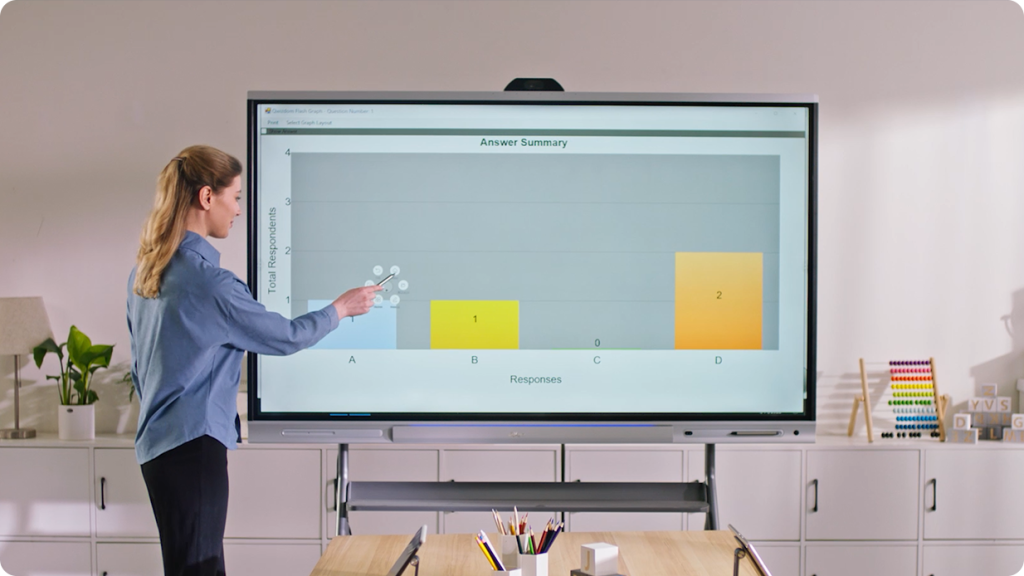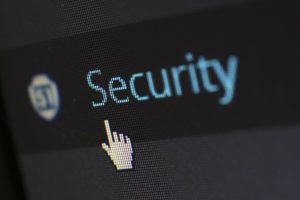Discover the seamless integration of Interactive Whiteboards. Simplify your setup with various “Types of Smart Boards,” avoiding unnecessary projector or software concerns.
It’s easy to use Interactive whiteboards; you only need a computer, a projector, and a connection. Don’t get caught up in sales pitches for projectors or software because most interactive whiteboard options come with installation and a short-throw projector. You don’t need to worry about which projector to choose because reliable alternatives are available from all Irish businesses. Different companies offer different assurances and services; each board has unique attributes. It can be tricky to categorize message boards, but I can break down the types of smart boards for you.
Interactive whiteboards (IWBs) are modern alternatives to overhead projectors, whiteboards, and blackboards. They have a large screen that displays computer graphics, and users can interact with the board by touching or writing on it with a finger, pen, or stylus. IWBs are becoming more common in corporate settings and classrooms because they allow for engaging multimedia resources during presentations and lessons.
There are three primary types of smart board technology: resistive, electromagnetic, and laser scanners.
What are smart boards or interactive whiteboards?
Interactive whiteboards, such as smartboards, allow users to interact with a projected image from a computer screen using a smartpen, finger, or other solid object. They were developed to enhance student learning and enable teachers to reach students with various learning styles.

Smartboards allow students to view full-colour graphics, graphs, diagrams, and films, bringing learning to life and encouraging collaboration and problem-solving. Teachers can easily stream lectures to students’ devices and access cloud-stored files directly from the smartboard.
Smartboards offer a free content library, pre-made templates, subject-specific tools, and other features to make lesson planning and delivery easier while promoting student learning. Types of Interactive whiteboards allow students and teachers to engage with text, programs, annotation tools, and other features on a whiteboard.
Interactive whiteboards, including smartboards, are used in Malaysia to input text, model problem-solving, highlight important information, and more. They can also function as a large projection screen, perfect for presenting topics and giving students a close-up look at anything.
Types of Smart Boards / Interactive White Boards (IWB)
1: Infrared Smart Boards – Pen Enabled
These boards are typically the most affordable ones available. They use a battery-operated pen and a customized adapter to stick it onto an existing whiteboard. These include EBeam, Mimio, Rainbow, VosaBoard, CleverBoard 3, 3M, and Interwrite Board, among many other names, models, and pricing ranges. These boards can typically be used as regular whiteboards with dry-erase markers. However, you are unable to interact with them with your finger.
2: Electromagnetic Pen-based White Boards
These boards receive their input via a grid of copper wires on the board. This eliminates the need for a battery-operated pen, saving money on batteries. These boards cannot be used as regular dry-wipe boards, though. You cannot use them while having your finger on them, either. They frequently cost more than the boards above as well. These boards include Promethean, Clasus, and IMEX as examples.
3: Touch-Enabled Mesh Smart Board
The user can engage with this board using their finger and a pen. On some of them, dry wipe markers are also permitted. They are decently priced as well. Teamboard, Traceboard, Smartboard, and IQBoard are a few examples. Only the Smartboard disallows the use of dry-wipe markers.

4: An Infrared Touch Enabled Smart Board
These boards employ a different technology but still have all the capabilities of the type mentioned above. Many of these boards also have magnets, which is advantageous. Once more, dry wipe markers work well on these. However, the smart board manufacturers don’t necessarily mention them in their manuals.
InTech Board, GeneeBoard, Hitachi Starboard, Imex Dualboard, and Cleverboard Dual are a few examples. Typically inexpensive, these boards are gaining a lot of popularity.
It’s ideal to check out the level of service you’ll receive once you’ve decided on the type of board you desire. Most businesses will provide you with support for at least three years. This is something that can probably be negotiated, in my opinion. Another factor to consider is determining how long you trust a company to remain around. Since the survey began, I’ve only had to remove one board from the list. Many of these businesses, in my opinion, are still around.
Top 5 Smart Boards for Business Conference Rooms and Schools
Types of Smart Board Technologies
1. Resistive Technology
IWBs, also known as interactive whiteboards, are modern alternatives to overhead projectors, whiteboards, and classic blackboards. An IWB comprises a sizable screen onto which computer graphics are projected.
By touching or writing on the screen of the computer with a finger, pen, or stylus, users can communicate with it. Interactive whiteboards are becoming more common in corporate settings and classrooms because they allow courses and presentations to incorporate more multimedia resources in an engaging and dynamic style.
Resistive, electromagnetic, and laser scanners are the primary IWB technology types now available.
2. Electromagnetic
A wire mesh incorporated in magnetic whiteboards uses electricity to generate a magnetic field. The pen’s location can be determined by altering the electrical impulses generated by the mesh when a particular pen with a coil at its tip is pressed against the whiteboard’s surface.
Touch interaction is not supported on magnetic whiteboards, while some applications benefit from the accuracy of a pen. In 1994, Numonics launched the first pen-based electromagnetic whiteboard, still a pioneer in the industry today.
3. The Laser scanner
Interactive whiteboards that use laser scanner technology are the priciest kind. At each corner are infrared laser scanners that monitor movement on the board. The whiteboard’s software can recognize various colors based on the pen’s collar when special pens with encoded reflective collars are used for interaction.
Hard-surfaced panels of this kind frequently allow the use of dry-erase markers. A manufacturer of this style of interactive whiteboard is Qomo Hitevision.
4. Infrared and ultrasound
A bar that attaches to the side of a regular whiteboard and connects to a computer and projector is a flexible replacement for an IWB system. The bar employs an ultrasound and infrared system and a stylus pen to locate the pen on the whiteboard. Marketing for this kind of interactive whiteboard is done by a business called Mimio.
Interactive White Board Software
The smart board software is the backbone of the device that offers several interactive functions, such as handwriting and shape recognition, and the capacity to capture and print the board’s contents. Other desirable features are supporting multiple screens that may be flicked over, like notebook pages and remote-controlled videoconferencing.
Many IWB software contains lesson plans, tools for teaching mathematical concepts, interactive books projected on the whiteboard, and built-in searchable libraries of shapes, images, sounds, and video in response to competition in the educational market.
Conclusion
The capacity to integrate technology into lessons must be the main advantage of employing a smart board in the classroom. Additional benefits include improving student learning by combining it with top-notch visual presentations. Lesson plans are saved and are simple to return if they are not finished in a single class period. Hardcopy papers are kept immaculate, while on-screen editing enables the smooth incorporation of new material.
When a smartboard is used, students are exposed to various teaching methods. Different learning styles are also considered, resulting in more students benefiting from their lectures. The ability to support online classes is another advantage of smart board technology. Remote learning is made possible via online instruction using video conferencing software, and moveable board alternatives make any location a classroom!
You typically don’t have to worry about a device’s charging time when working from an interactive board. This is because charging usually takes place when the gadget is in use. Smart gadgets like interactive whiteboards are the ideal technologies to use, whether you want to share a single PDF file or several!
Finally, your use case, available space, budget, and technological needs will determine the best type of smart boards for you. Investigating and comparing many models is critical to selecting the best fit for your requirements.




















